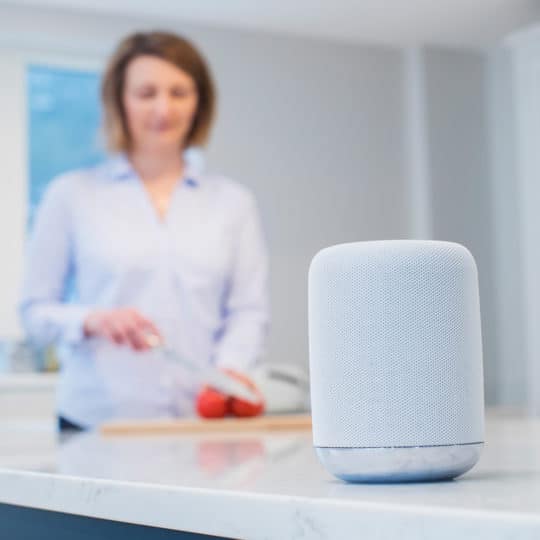Choosing a Home Automation System on a Budget
Affordable Ways to Make Any Home Smart

When some think of choosing a home automation system, visions of the Jetsons may arise, with the way daily tasks are easily done conveyer-belt style. These days, others may think only the rich can afford a smart home. However, there are a growing number of products that make the day-to-day a little easier without going broke.
Choosing a Home Automation System
You may think you need a professionally installed system to automate your home, and there are some available. But they’re not the only option. You can easily connect the devices in your home without a computer programming degree.
Shopping for the right system requires a list of things you want it for. Do you need a front door security system, a way to turn on and off the lights by voice command, or prefer more general information about the weather and contents of your fridge? There are smart devices for a wide range of home appliances and everyday functions. Many run on a similar network—like an Amazon, Google, or Apple device. Once set-up, controlling them is easily done through a smartphone app.
Additional accessories can be added to heighten the smart home experience. There are also online tutorials and support to help guide you through everything from installation to connectivity.
Home Automation Expectations
While we may not be at Jetson-level yet, it could only be a matter of time. Until then, it’s still important to research all the systems and be realistic with what you want from what you need. The typical family doesn’t need a panic room full of monitors gathering footage of every room. But you can program a vacuum to clean every room while you’re away and stay on top of its schedule right from your phone.
Keep the following categories in mind when shopping for a home automation system:
- Mobile apps. With the right system, you can control multiple smart home devices with one mobile app. The app will also notify you of certain situations you have programmed.
- Installation. Mounting cameras, plugging in Wi-Fi adapters, and syncing systems are some of the main forms of installing a home automation system. Some devices may require manipulating electrical wiring, and this should be done by a professional if you’re not comfortable with the process.
- Compatibility. Be sure whatever accessories you try to add is compatible with the system you currently have. Syncing a device with a certain system can prove frustrating if the two are not meant to pair.
- Pricing. From a single smart light bulb to a fully automated home, there’s a range of products at different prices. It’s best to start small and gradually build your smart home over time.
- Security. The idea of automating your home may be exciting until you realize the amount of information you have to provide to personalize the system and improve service. There’s a higher chance these systems can be hacked and personal information stolen, although most hubs use encryption to help protect your data on their servers.
Budget-Friendly Devices
Here are a few affordable accessory options to get you started in home automation:
- Light switches and bulbs
- Programmable thermostats
- Smart outlets
- Smart locks
- Security cameras
- Sensors
- Garage door openers
You may already have one or two of these around your home, but there could be an updated option available that allows you to control it from anywhere through an app. While these devices require an app and Wi-Fi system, that’s easily obtainable if you don’t already have it. Once you get a taste for home automation, it may grow to another device, and before you know it you may wonder what you did without it before.